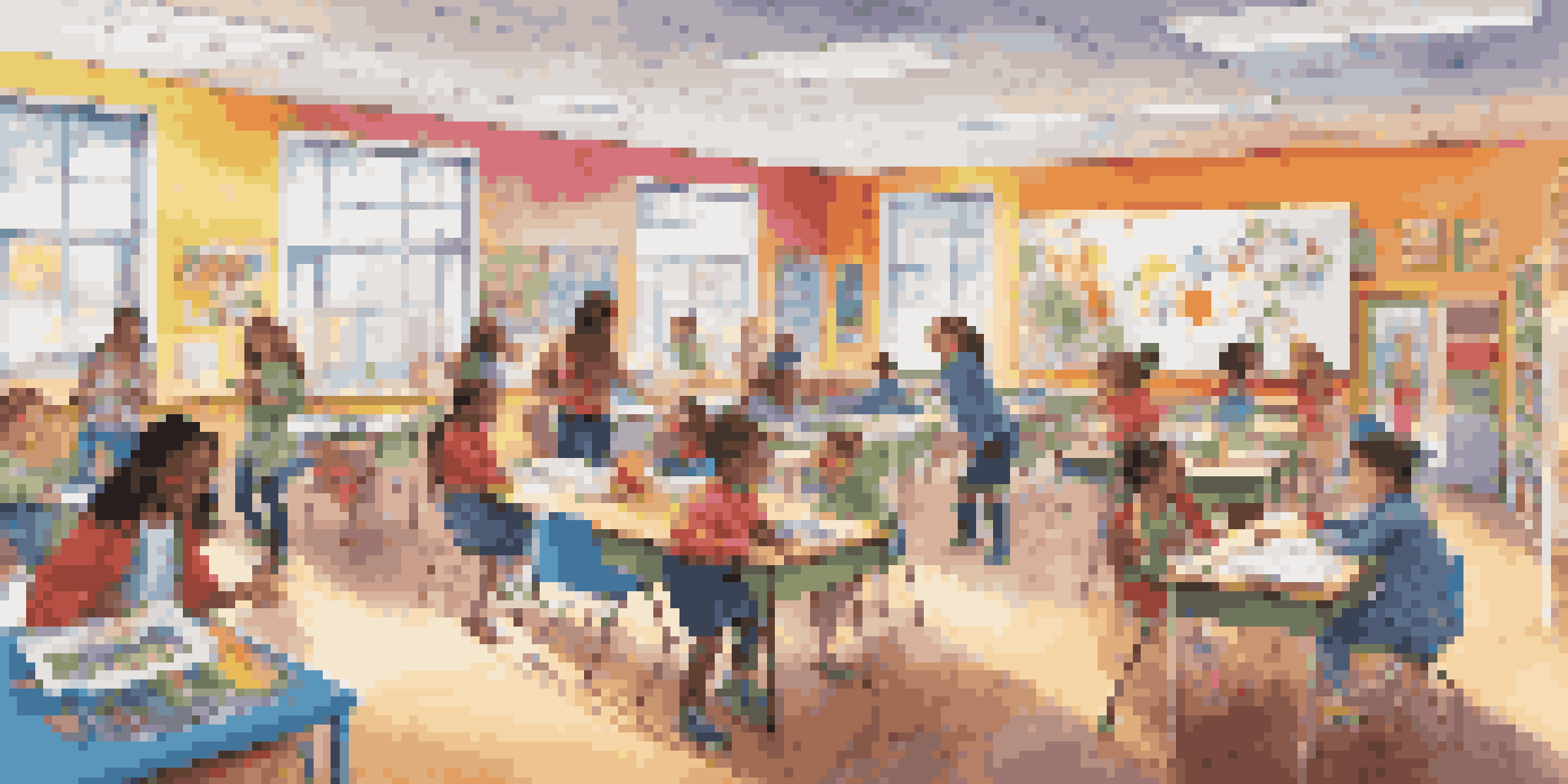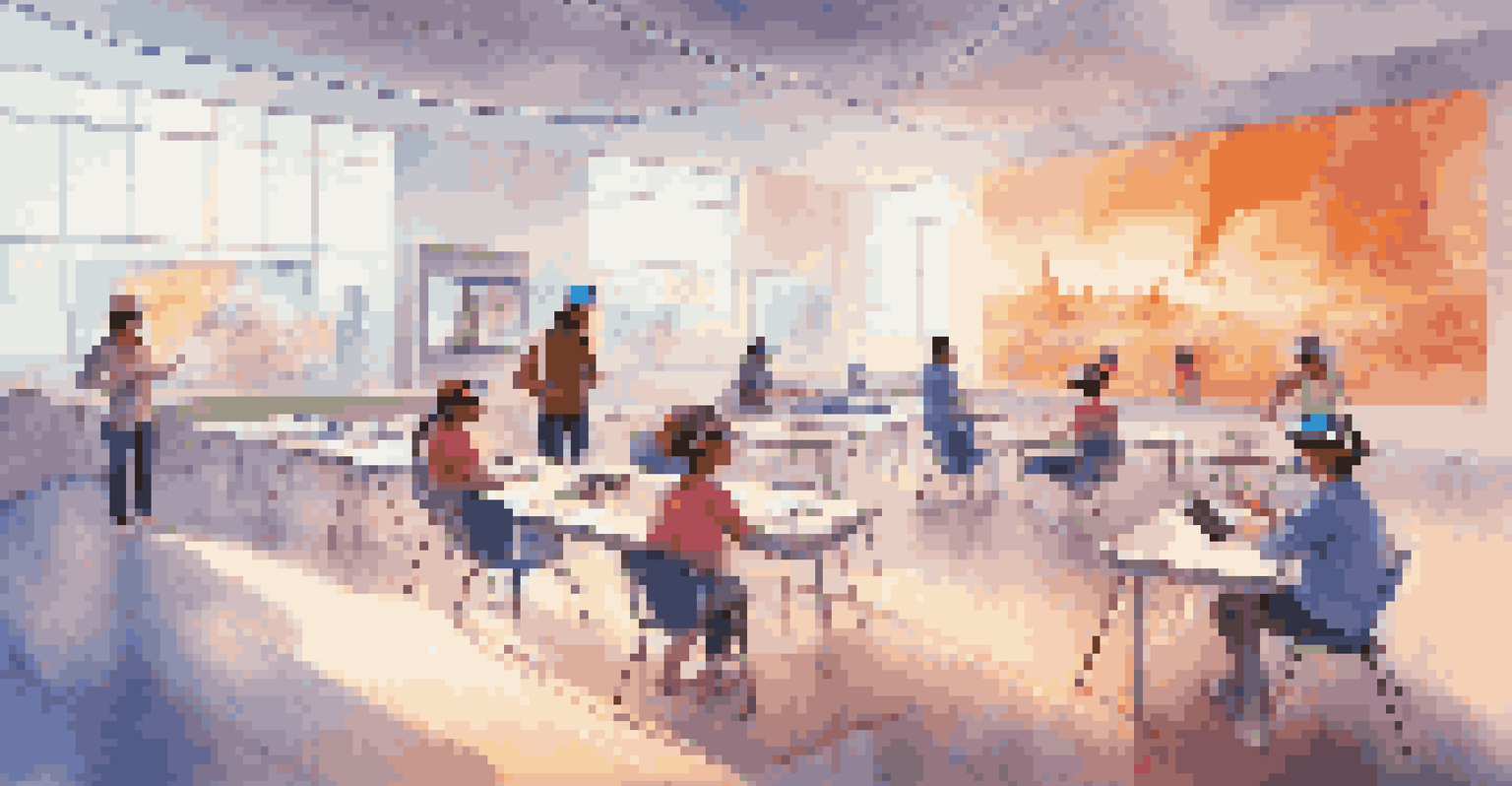The Role of Play in Learning Experience Design Practices

Understanding Learning Experience Design (LXD)
Learning Experience Design (LXD) focuses on creating engaging educational experiences. It's about understanding the learner's journey and crafting environments that facilitate effective learning. By prioritizing the needs and preferences of learners, LXD aims to enhance retention and application of knowledge.
Play is the highest form of research.
LXD incorporates various elements such as content, interaction, and assessment to foster a holistic learning environment. It's not just about delivering information; it’s about creating memorable experiences that resonate with learners. This approach recognizes that how we learn is just as important as what we learn.
Incorporating play into LXD can revolutionize how learners engage with content. By making the learning process enjoyable and interactive, designers can tap into the natural curiosity and creativity of learners, making the experience more impactful.
The Psychology of Play in Learning
Play is not just child’s play; it’s a fundamental aspect of human development. Psychologists believe that play encourages exploration, experimentation, and risk-taking—all essential for effective learning. When learners are in a playful state, they are more open to new ideas and experiences.

Furthermore, play reduces anxiety, creating a safe space for learners to express themselves and make mistakes. This environment fosters resilience and adaptability, which are crucial skills in today’s fast-paced world. By integrating play into LXD, we can harness these psychological benefits to improve learning outcomes.
Play Enhances Learning Engagement
Incorporating play into learning experiences significantly boosts engagement, motivation, and retention among learners.
For instance, think of role-playing scenarios where learners can practice real-life situations. This not only makes the learning process enjoyable but also allows them to apply theoretical knowledge in practical settings, reinforcing their skills and confidence.
Types of Play in Learning Experiences
There are various types of play that can be integrated into learning experiences, including structured play, free play, and gamified activities. Structured play often includes games with specific rules, while free play allows learners to explore without constraints. Both types serve different purposes in enhancing learning.
The greatest gifts you can give your children are the roots of responsibility and the wings of independence.
Gamification, on the other hand, introduces game elements into non-game contexts, making learning more engaging. Badges, points, and leaderboards can motivate learners to participate actively and strive for achievement. By incorporating these playful elements, educators can create a more dynamic and interactive learning environment.
For example, using simulations in a business course allows students to experiment with decision-making in a risk-free environment. This type of playful learning not only deepens understanding but also prepares learners for real-world challenges.
Benefits of Integrating Play in LXD
Integrating play into learning experience design offers numerous benefits, including increased engagement, motivation, and retention. When learners find the material enjoyable, they are more likely to stay focused and absorb information. This leads to a deeper understanding and long-lasting knowledge.
Moreover, play fosters creativity and critical thinking skills. As learners navigate playful challenges, they develop innovative solutions and learn to think outside the box. This creative mindset is invaluable in problem-solving situations, encouraging learners to approach tasks with a positive and open attitude.
Types of Play in Education
Different forms of play, such as structured play, free play, and gamified activities, serve various purposes in enhancing educational experiences.
Consider a classroom where students are tasked with designing a product as part of a project. By incorporating playful brainstorming sessions, students can explore countless ideas, leading to more inventive and unique outcomes.
Challenges in Implementing Play in LXD
While incorporating play into learning experiences is beneficial, it does come with challenges. One major hurdle is the perception that play is not serious or productive. Educators and designers may struggle to justify the time spent on playful activities, fearing it detracts from curriculum goals.
Additionally, balancing play with educational rigor can be tricky. It’s essential to ensure that playful elements align with learning objectives and outcomes. Without this alignment, the effectiveness of play as a learning tool can diminish.
To overcome these challenges, it’s crucial to communicate the value of play in learning. By presenting evidence-based research and successful case studies, educators can advocate for the integration of play as a vital component of effective learning experiences.
Real-World Examples of Play in LXD
Many organizations are already harnessing the power of play in their learning design. For instance, companies like Google and Microsoft use gamified training programs to enhance employee skills. These programs not only increase engagement but also drive better performance outcomes.
Educational institutions are also embracing play as a learning tool. Schools implementing project-based learning often incorporate elements of play, allowing students to explore concepts through hands-on activities. This approach leads to a more engaged classroom where students take ownership of their learning.
Challenges and Solutions for Play
Despite the benefits, integrating play into learning design faces challenges like misconceptions about its productivity, which can be addressed through evidence-based advocacy.
Moreover, online platforms like Kahoot! and Quizlet utilize game mechanics to make learning interactive and fun. By transforming traditional assessments into playful challenges, these platforms motivate learners to participate actively and enjoy the process.
Future Trends in Play and Learning Experience Design
As we look ahead, the integration of play in learning experience design will likely continue to evolve. Advances in technology, such as virtual and augmented reality, will create even more immersive and engaging learning environments. These innovations can enhance the playful aspects of learning and provide opportunities for experiential learning.
Additionally, the growing emphasis on social-emotional learning will further underscore the importance of play. Educators are recognizing that fostering emotional intelligence and interpersonal skills is just as important as academic achievement, and play can play a critical role in this development.

Ultimately, the future of LXD will involve a more holistic approach that prioritizes play as a key element. By embracing play, we can create learning experiences that are not only effective but also enjoyable, preparing learners for success in an increasingly complex world.